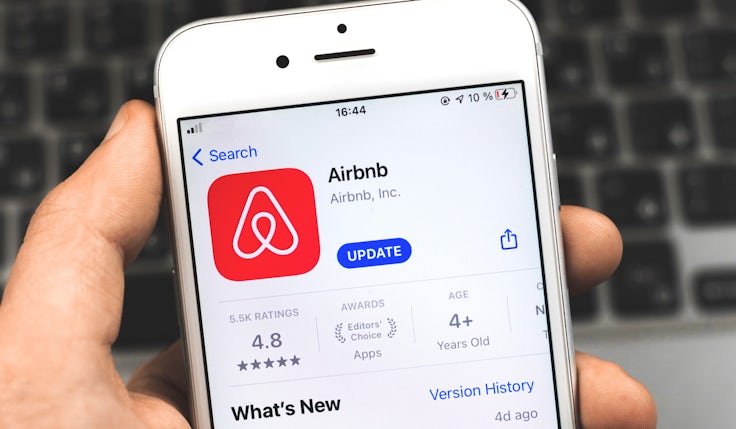Where should brands turn when trust is in short supply?
Research shows news brands can help advertisers establish a trusting relationship with consumers that translates into profit.

Consumers are more likely to shop with the brands they trust, so it follows that higher levels of trust are a route to higher profits. But what is it that builds trust in brands, how is that relationship established with consumers and, then, how do marketers keep reinforcing it to build strong brands for the future?
In his analysis of the IPA Databank of awards submissions, marketing effectiveness expert Peter Field has shown the growing link between brand trust and ‘business effects’ such as profit. Out of a basket of seven brand metrics for campaigns that ran between 2000 and 2012, trust was the least important driver of ‘very large’ improvements in profit. But for campaigns between 2014 and 2022, it jumped up to second place, also showing a close correlation with the top metric – quality.
“This strongly suggests that the importance of trust in the mental availability of brands has grown, and in particular that trust has become a more important dimension of quality perceptions,” Field writes in his latest analysis of the IPA Databank, included within a new report from Newsworks entitled ‘Trust’.
As Newsworks insight partner Sorcha Garduce explains: “Trust didn’t used to be on a consumer’s radar 20 years ago. It was more about quality and likeability. People used to assess the quality of brands without worrying about how much they trusted them because they trusted all brands back then. It just wasn’t a big issue, unlike now when quite the opposite is true.”
Familiarity and fame build trust
Four elements form the Newsworks report’s definition of trust, which is informed by analysis from research agencies Map The Territory and Tapestry Research. ‘Familiarity’ is accrued over time, giving confidence in the brand. ‘Fame’ is about social proof – others value the brand so it is tried and tested. ‘Competence’ is a straightforward evaluation of whether or not the brand does what it claims. And finally, ‘risk’ is about how much the consumer puts on the line by purchasing the product – financially, socially or even in terms of consumer safety. Familiarity and fame can help increase trust in a brand, while negative views about competence and risk can hold it back.
As Garduce explains, the ‘Trust’ report reveals that establishing familiarity takes on an interesting twist in certain media: “We tested a couple of challenger brands without much familiarity or fame and their trust impact was higher when they advertised on news brands, versus a non-news brand. Because people are seeing this brand they don’t know in a quality, trusted environment, that transfers over to the brand.”
The importance of trust in the mental availability of brands has grown, and in particular that trust has become a more important dimension of quality perceptions.
Peter Field, effectiveness expert
So it would appear that brands can shift the needle on familiarity and fame through their advertising strategies. “Trust and quality are metrics that both play to the strengths of advertising in news brands,” Field suggests. “Media choices do look to be at play when analysing why trust is important.”
The ‘Trust’ report suggests that there is an associative relationship between campaigns that create trusted effects and their media budget allocation. TV and press are associated with stronger brand trust but the reverse is true of social media. Trust in news brands is particularly important in the fake news era.
“If you’re a reader of a news brand, you have a relationship with that brand and you trust what it’s telling you. It’s a long heritage that you don’t get with lesser-known digital news sources and social media. With the misinformation around, people want information from checked and verified sources,” Garduce insists.
Trusted media environments
While ads are subject to their own regulations, the halo effect of publishing news in a regulated environment also cannot be underestimated. According to Tapestry’s research for the ‘Trust’ report, 89% of consumers agree it’s important for accuracy that all news sources are subject to laws and regulations, hence nearly two-thirds of readers (63%) trust newspapers. And according to another Newsworks report – ‘The power of news brands’, published last month – 74% of those who expressed an opinion turn to news brands to verify stories they have read on social media.
Field’s IPA Databank analysis found that there was a 52% uplift in very large brand effects for news brand advertisers on any platform, compared to those who didn’t advertise with news brands between 2016 and 2018. News brand multiplatform use also boosted the profits from other media, particularly since 2016.
There was some concern, particularly during the Covid pandemic, that advertising seen next to negative or distressing news stories might somehow impact the brand perception, however Newsworks’ Garduce suggests this is not the case.
“We did a piece of neuroscience research a while ago to find out more about the ins and outs of brand suitability. We didn’t see any difference in terms of negative withdrawal or engagement from people seeing an ad in a soft news environment, versus a hard news one. There was actually slightly more engagement in the hard news space. Clients have to think hard about suitability of placement, but it doesn’t mean they have to pull their advertising from hard news.”
In the face of fake news, and an increasingly sceptical public, establishing credible sources of truth is vital to develop long-lasting trust. With a growing reserve of proof that shows how valuable trust is, not only to brand perception but to the bottom line, companies should be exploring how they can invest in, protect and promote their trusted brands effectively. The latest research from Field and the IPA Databank would appear to confirm that news brands have a central role.
Download the full report from the Marketing Week Knowledge Bank.






